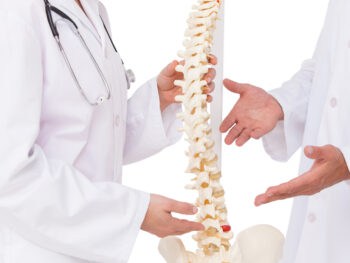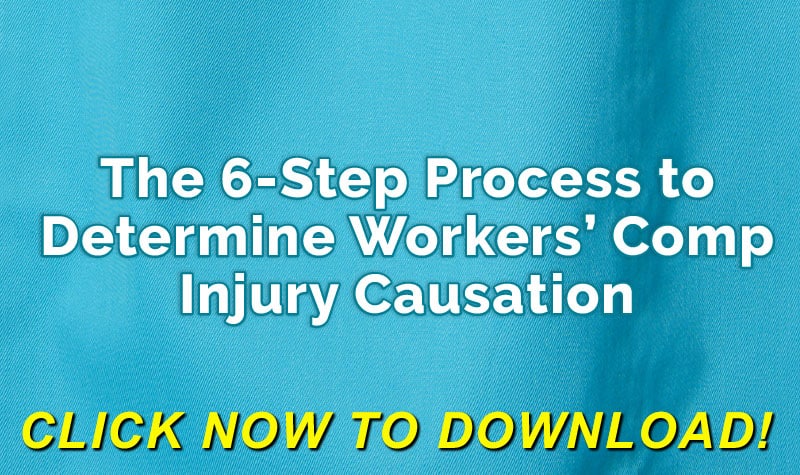The cost of drugs is the fastest growing component of medical care cost and often one of the most neglected areas of workers compensation cost control. It is estimated that workers compensation pays $5 billion in drug cost each year. While there are numerous pharmacy benefit managers (PBM) in the work comp arena, they are often either totally ignored or only partially utilized by the insurers, self-insureds and third party administrators (TPA). Other areas of medical cost control like fee bill schedules, medical provider networks, medical management and utilization review get more attention than PBM, but proper utilization of PBM can result in substantial savings in the cost of work comp.
Click Link to Access Free PDF Download
“The 6-Step Process To Determine Workers’ Comp Injury Causation”
What PBM Can Do?
Unfortunately, many claim adjusters think of PBM only as a way of saving money by getting a discount on the cost of prescriptions. With some PBM that is all they do. However, if the insurer (or the self-insured employer who is paying attention to the factors in the cost of their work comp coverage) shops around among the PBM providers, they should be able to locate a PBM that has a national presence and a focus on proactive utilization control. Key service points and cost control solutions to consider for a PBM include:1. The flexibility to coordinate the medical prescription benefit in the most efficient manner between the employee, the pharmacy and the medical provider with minimal involvement of the adjuster
- The ability to comply with all the workers’ compensation rules and regulations of each state, which can vary tremendously from state to state, and to stay current/up to date
- The technology to process the prescription in real time – without delay when presented by the employee to the pharmacy – with the appropriate pricing (WCxKit)
- A national network covering most of the 70,000+ pharmacies in the United States. This will provide convenience and hassle-free access for the employees regardless where they live (also to prevent non-compliance with the required use of the PBM). The PBM network should definitely include the three major chains – Walgreens, CVS Pharmacies and Rite-Aid
- A comprehensive standard formulary that can be customized and injury-specific and/or patient-specific to manage utilization (even customized down to the ICD-9 codes)
- A pre-negotiated price (network discount) for each drug (a 25% discount off a price that is 50% higher than it should be is not a cost savings)
- The ability to provide home delivery by the Postal Service, Fed Ex or UPS at minimal extra cost
- The willingness to provide 24 hours a day, 7 days a week customer support service
- The ability to identify generic substitution opportunities
10.The identification of newer drugs that provide greater benefit
11.The ability to process – approve or deny – the off-label use of a drug
12.Utilization review — before the prescription is filled – to prevent of overuse of narcotics – consumption faster than manufacturer recommendations or faster than the medical provider’s prescription amount
13.The prevention of multi-physician (“doctor shopping”) prescriptions from being processed for the same drugs or duplicate use drugs
14.The prevention of multi-pharmacy involvement in filling the same prescription (for example – the employee takes the paper prescription to one pharmacy to be filled, then called the medical provider, claims to have lost the prescription and has the prescription called into another pharmacy)
15.The technology to recognize when inappropriate or non-compensable medication is being dispensed (for example – a non-injury related medication is being presented to the pharmacy) and the ability to stop it from being filled
16.The ability to be electronically integrated with the insurers’, TPAs or self-insured’s bill review system to eliminate the manual processing of individual prescription payments
17.The ability to provide ancillary services like durable medical equipment (nice to have, but not absolutely essential)
18.The ability to provide reports on cost savings, utilization and trending
19.The ability to provide correct pricing for any drugs dispensed from the doctor’s office which often are over billed
- Accreditation by the Utilization Review Accreditation Committee reflects the PBM promotes quality and efficiency of health care delivery
A Growing Problem:
The use of PBM does result in a reduction in the abuse of pain medications. However, some employees who become pain medication junkies have found a way to circumvent the PBM. A growing problem is the medical providers who will perform office injections for the employee. The medical provider gets paid for multiple office visits and the pain medication junkie keeps on abusing the pain medication.
Summary:
The appropriate management of medications by the PBM can lower the overall cost of medical care and shorten the return to work time. The employee benefits from the PBM by receiving the necessary medications locally (or home delivery) while the employer benefits from the employee receiving the appropriate medications in a timely manner. The insurer or self-insured benefit from the medical savings the PBM provides.
Author Rebecca Shafer, President, Amaxx Risks Solutions, Inc. has worked successfully for 20 years with many industries to reduce Workers Compensation costs, including airlines, healthcare, printing/publishing, pharmaceuticals, retail, hospitality and manufacturing. Info@ReduceYourWorkersComp.com .
WORK COMP CALCULATOR: http://www.LowerWC.com/calculator.php
MODIFIED DUTY CALCULATOR: http://www.LowerWC.com/transitional-duty-cost-calculator.php
LINKEDIN GROUP: http://www.linkedin.com/groups?homeNewMember=&gid=1922050/
SUBSCRIBE: Workers Comp Resource Center Newsletter
Do not use this information without independent verification. All state laws vary. You should consult with your insurance broker or agent about workers comp issues.
©2010 Amaxx Risk Solutions, Inc. All rights reserved under International Copyright Law.












